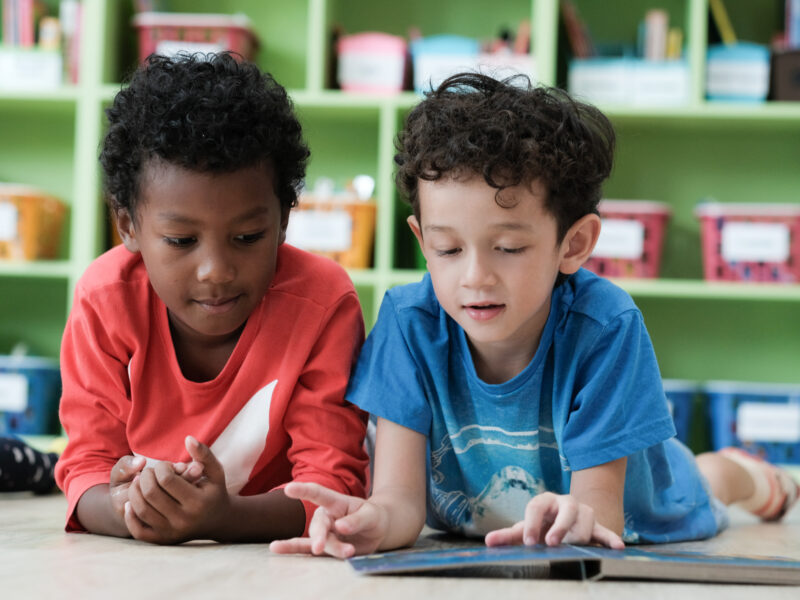Cerebrate Blog.
Explore strategies for skill development

Clear Ways to Identify Challenges in Self-Monitoring: A Guide for Teachers Elementary Teachers
Posted In Behaviors On January 7, 2025
Elementary classrooms are bustling with young learners eager to grow academically and socially. However, some students struggle to meet behavioral and academic expectations due to deficits in executive function skills, often demonstrating challenges in self-monitoring. Self-monitoring, one of the core components of executive function, involves the ability to assess and adjust one’s behavior, thoughts, and actions to achieve goals effectively. When students lack strong self-monitoring skills, they may exhibit behaviors such as:
- Struggling to work carefully without mistakes
- Speaking impulsively without thinking
- Failing to realize when their actions are bothering others
These behaviors can frustrate both teachers and students, impacting classroom dynamics and learning outcomes. By understanding the connection between these behaviors and executive function, teachers can implement targeted strategies to empower students and improve their performance.
Executive Function Explained: What is Self-Monitoring?
Self-monitoring is an essential executive function skill that helps students stay aware of their actions and adapt them as needed. For example, when a student catches a mistake on their math worksheet, they are demonstrating self-monitoring. If this skill is underdeveloped, students may struggle to recognize their errors, speak without considering the consequences, or miss social cues that signal discomfort in others.
Addressing Challenges in Self-Monitoring Through Executive Function Instruction
When students struggle with self-monitoring, it’s essential to view these behaviors through the lens of executive function learning. Implementing executive function instruction not only addresses immediate behavior concerns but also fosters long-term student confidence and success. Here are some practical strategies for addressing common self-monitor challenges in the classroom:
Helping Students Work Carefully Without Mistakes
Students who frequently make careless errors often need support in slowing down and checking their work. Use executive functioning tools such as checklists and visual cues to guide their problem-solving process. Explicitly teach them how to pause, review their work, and correct errors. Incorporating executive function lessons into daily routines can help build this critical skill over time.
Supporting Students to Think Before Speaking
Impulsive speaking can disrupt classroom harmony and hinder student relationships. Teaching executive function skills like self-regulation can help students manage their impulses. Role-playing scenarios and using prompts like “Stop and Think” encourage students to reflect before speaking. These strategies improve academic performance and build essential social skills.
Guiding Students to Recognize the Impact of Their Actions
When students fail to notice how their actions affect others, they may struggle with peer relationships. Executive function interventions can include activities that teach empathy and perspective-taking. For instance, group discussions about how different actions make others feel can enhance students’ self-awareness and social skills.
Building an Executive Function System in Your Classroom
Addressing challenges in self-monitoring requires a thoughtful approach that integrates executive function instruction into your daily teaching. An effective executive function curriculum doesn’t just address academic needs; it also supports student behavior management and social-emotional learning. By solving executive function challenges with targeted strategies, teachers can create a classroom environment where all students thrive.
Consider these steps to integrate executive function strategies into your teaching:
- Identify student learning needs: Use observation and assessments to determine which executive function skills your students struggle with.
- Implement executive function tools: Utilize planners, timers, and other aids to help students stay organized and focused.
- Provide direct instruction: Teach executive function skills explicitly through lessons and modeling.
- Monitor and adapt: Regularly evaluate your students’ progress and adjust your strategies as needed.

Challenges in self-monitoring are observed by a teacher.
Empowering Students Through Executive Function Strategies
Teaching executive function skills equips students with tools to manage their behavior, improve academic performance, and develop stronger social skills. It’s a powerful way to empower students and set them up for lifelong success. By addressing challenges in self-monitoring, you can help students build the confidence needed to navigate challenges in and out of the classroom.
Learn how to evaluate student behaviors and create a customized executive function curriculum.
By focusing on executive function instruction and integrating it into your teaching practices, you can transform self-monitoring challenges into opportunities for growth, improving both student engagement and performance in your classroom. Together, let’s empower every student to succeed.

